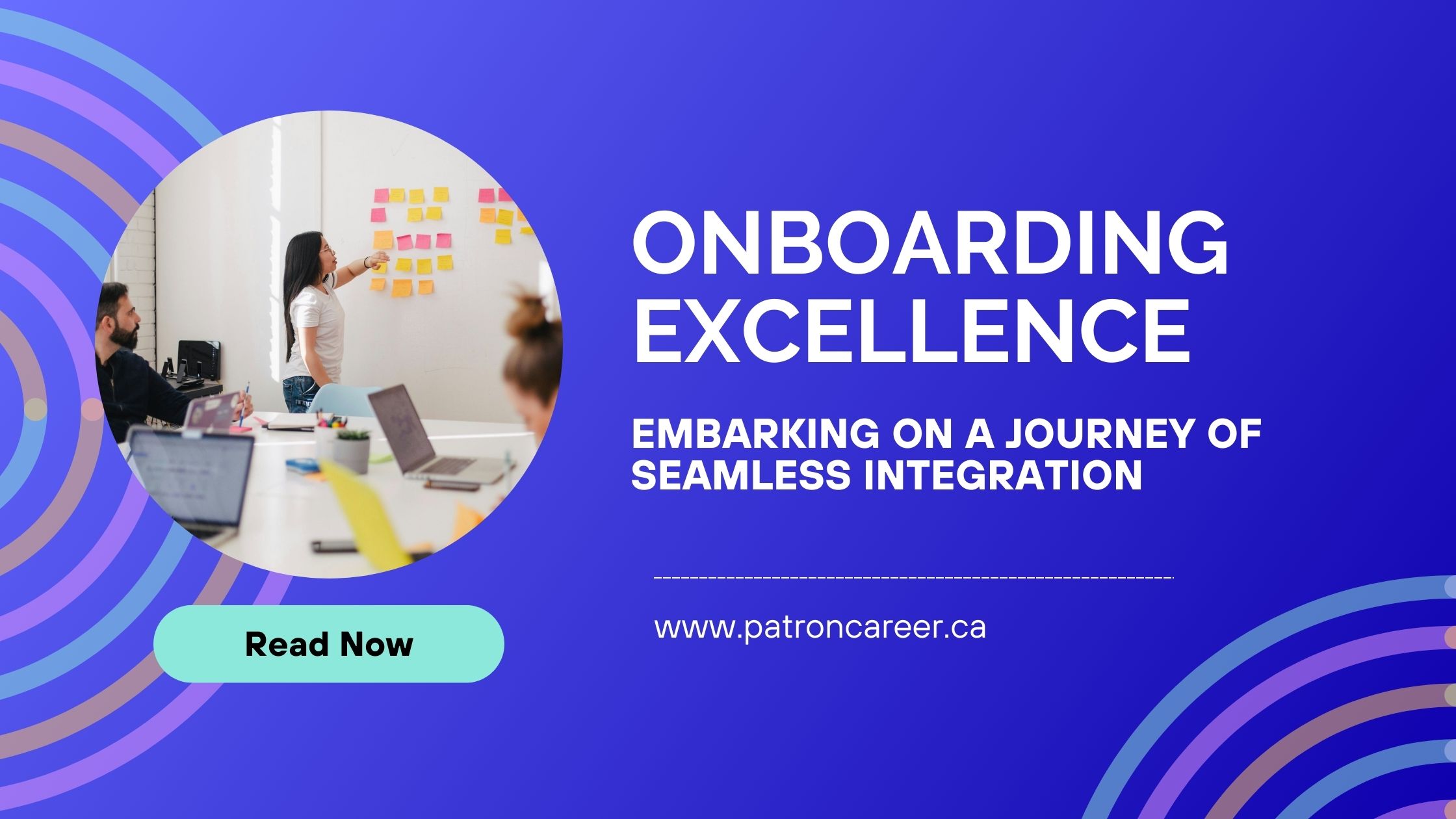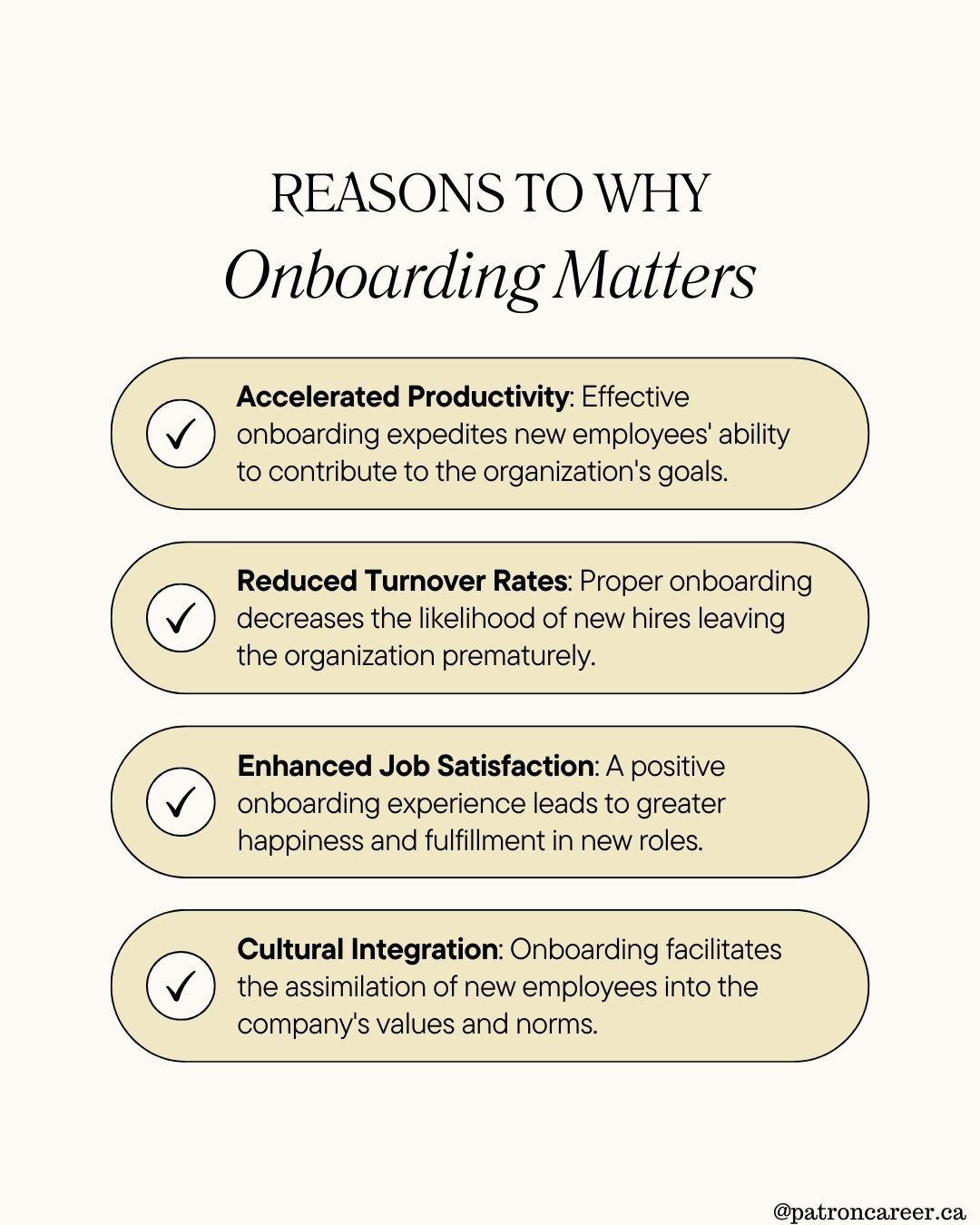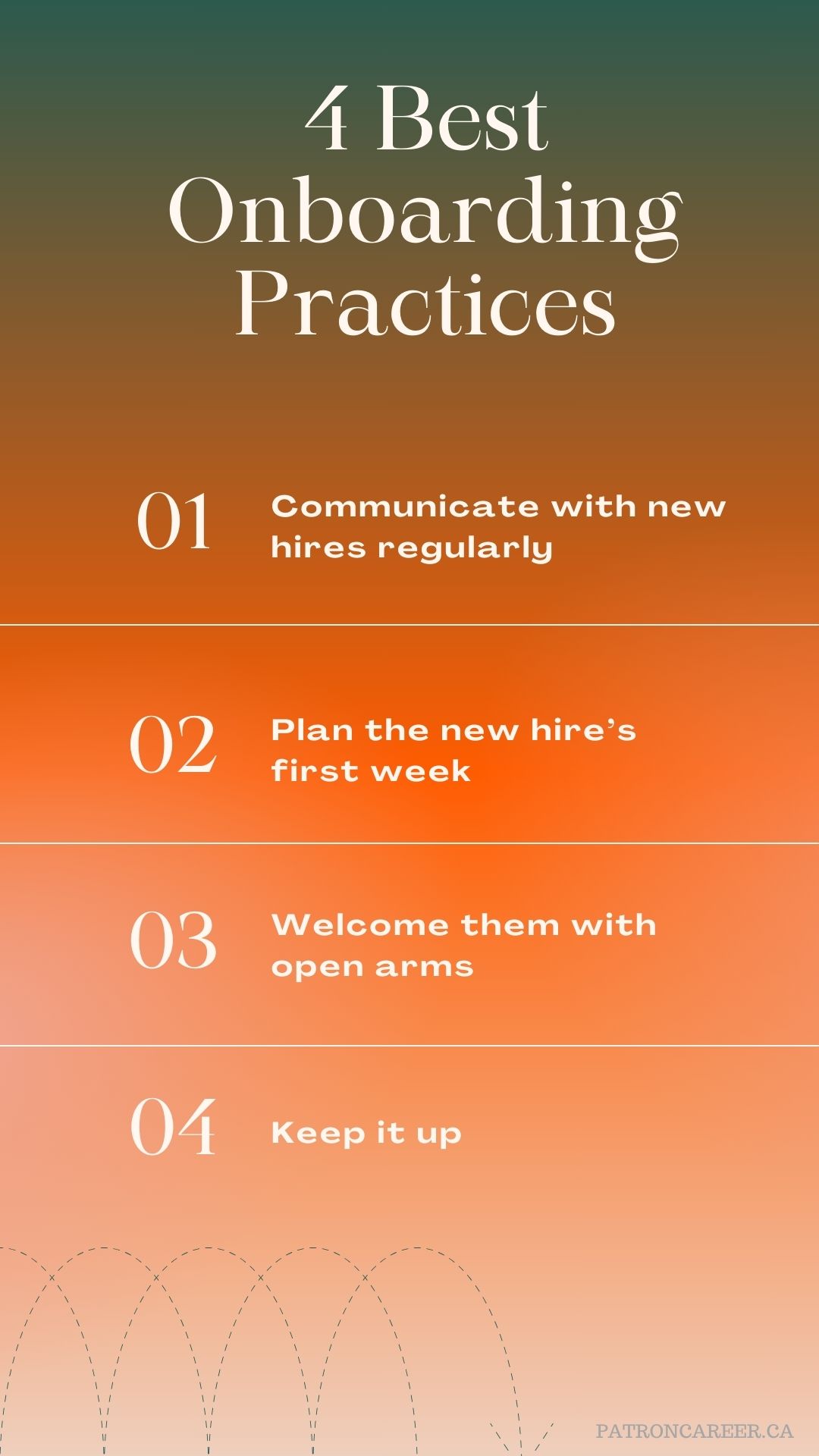
Business Analysis Skills for HR Managers
5 February, 2024
Patron Career Staffing firmly believes in adopting a tailored approach to meet temporary and permanent recruitment needs. We safeguard the interest of our clients by finding such workers who are knowledgeable and reliable.
About UsNeed help? Make a Call
32 Dundas Street East Unit A, L5A1W2

Dear PCS Team,
At Patron Career, we value and recognize the pathway into a new professional setting which can be both: nerve-wracking and exhilarating at the same time. One can have first-day jitters and still feel at ease if employers can get their onboarding process right. A well-structured onboarding plan is pivotal for the long-term success of the company as it ensures that new hires feel confident and prepared as they begin their journey with you.
First days shouldn't always be hard. So, we’re here to warrant that every facet of an employee’s integration into a new workplace is met with utmost clarity and support. Today’s article peeps into the enigmatic journey of employee onboarding , often synonymously used with employee orientation, which is the very first step of onboarding. We look into the basics of onboarding new employees, and what can companies do to make it even better.
What is Employee Onboarding and How to Master it?
Employee onboarding entails more than the mundane paperwork process; if conducted righteously it accelerates the success rate of you and your employees. It starts when new employees join but doesn’t end until each one of them is fully adjusted to their roles and teams. It serves as the gateway to assimilating new talent into the cultural tapestry of the organisation, acquiring them with the collective goals, shared values, company dynamics and operational hierarchy. Mastering this holistic process involves a comprehensive approach that goes beyond administrative formalities to truly cultivate a sense of purpose and belonging within each member of the organization.
Companies cannot overlook the importance of onboarding since it is a vital component of the staffing process. It is used to give new employees a big picture of the office and the team they’ll work with.
Related: First day at work- Tips for Enjoying the New Experience
Importance for Employee Triumph
The significance of effective onboarding cannot be overstated. It serves as the keystone upon which the employee’s professional trajectory is founded, which not only enhances job experience but also lays the groundwork for sustained success and fulfilment. Moreover, by fostering a sense of belongingness and purpose from the outset, employers can build an environment that invigorates employees to thrive and achieve anticipated company goals. The ROI on onboarding is extremely high, as it will bring down attrition rates and enhance the productivity of the workforce.

The Four Essential Stages of Your Employee Onboarding Checklist
Preparation: The initial phase of the onboarding process lays the groundwork for a seamless transition into the organization. It encompasses the meticulous gathering of essential documentation, the setup of the new employee's workspace, and the coordination of logistical details such as start dates and schedules. Clear and transparent communication is imperative during this stage to ensure all parties are aligned and prepared for the new employee's arrival.
Orientation: Following the preparatory phase, the orientation stage serves as an introduction to the company's culture, values, and overarching mission. New employees are familiarized with key stakeholders, provided with an overview of company policies and procedures, and guided through a comprehensive tour of the workplace. Orientation sessions may also include basic training on company tools, systems, and resources to facilitate a smooth transition into the organization.
Training: With the foundational knowledge established during orientation, the focus shifts to skill development and role-specific training. This stage aims to equip new employees with the requisite knowledge and competencies to excel in their roles. Training sessions may encompass technical skills training, job shadowing opportunities, and mentorship programs tailored to the individual's professional growth and development objectives.
Related: 4 STEPS TO CREATE AN EFFECTIVE EMPLOYEE TRAINING PROGRAM
Integration: The final stage of the onboarding process centres on integrating the new employee into the organizational ecosystem. It involves fostering meaningful connections with colleagues, participating in team-building activities, and immersing oneself in the company culture. Managers and mentors play a pivotal role in providing guidance and support as new employees navigate their roles and responsibilities. Regular check-ins and feedback sessions facilitate ongoing communication and ensure any challenges are addressed promptly to promote a sense of belonging and engagement.
By adhering to these four essential stages, organizations can establish a robust onboarding framework that fosters a positive employee experience and accelerates long-term success and retention within the company.
Enhancing Onboarding Excellence: What Companies Can Do to Elevate the Experience

Personalization: Tailor the onboarding experience to the individual needs and preferences of each new hire. This could include personalized welcome messages, customized training plans, and opportunities for one-on-one mentorship.
Feedback Mechanisms: Implement feedback loops to gather insights from new hires about their onboarding experience. Regular check-ins and surveys can help identify areas for improvement and ensure that the process remains relevant and effective.
Continuous Learning: Extend onboarding beyond the initial orientation period by providing ongoing learning and development opportunities. This could include access to online courses, workshops, and mentorship programs to support professional growth and skill enhancement.
Integration Activities: Foster a sense of belonging and camaraderie among new hires by organizing team-building activities and social events. Encouraging interactions with colleagues from different departments can help forge connections and promote a collaborative work environment.
Streamlined Processes: Simplify administrative tasks and streamline onboarding procedures to minimize stress and confusion for new hires. Investing in user-friendly technology and automation tools can help expedite paperwork and ensure a seamless transition into the organization.
Conclusion
Summing up, onboarding should be more than a mere formality since it is an informative, engaging and supportive odyssey. By prioritizing these strategies, companies can elevate the onboarding experience, setting the stage for long-term employee engagement, retention, and success.
